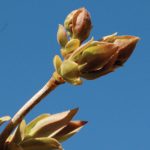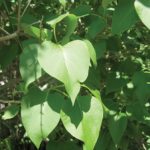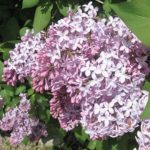Common Lilac Fact Sheet
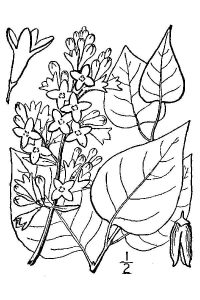
Common lilac is a perennial, deciduous shrub that grows 12 to 15 feet tall. Lilac flowers can be white, light purple, or dark purple, and have a very pleasant fragrance. Common lilac is often planted in landscapes, and is commonly available at commercial nurseries. Common lilac is native to Europe, but is now found throughout much of the northeastern half the US and Canada, as well as into some western states.
Leaves, flowers and fruits: Common lilac leaves are heart-shaped with smooth edges. Leaf buds are separate from flower buds. Leaf buds are smaller and more pointed than flower buds, which are larger, round, and lighter green. Individual flowers have four petals and a tubular base, and are arranged in clusters at branch tips. Similar to the forsythia, the fruit of a lilac is a small capsule (1-2 cm) that contains two seeds.
Sources and Additional Information:
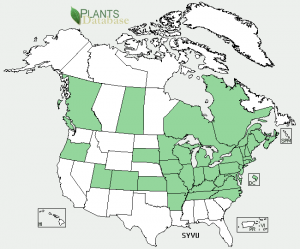
USDA, NRCS. 2012. The PLANTS Database (http://plants.usda.gov, 20 May 2012).
National Plant Data Team, Greensboro, NC 27401-4901 USA.
USA Phenology Network — Observing Plants and Animals, http://www.usanpn.org/Syringa_Vulgaris

